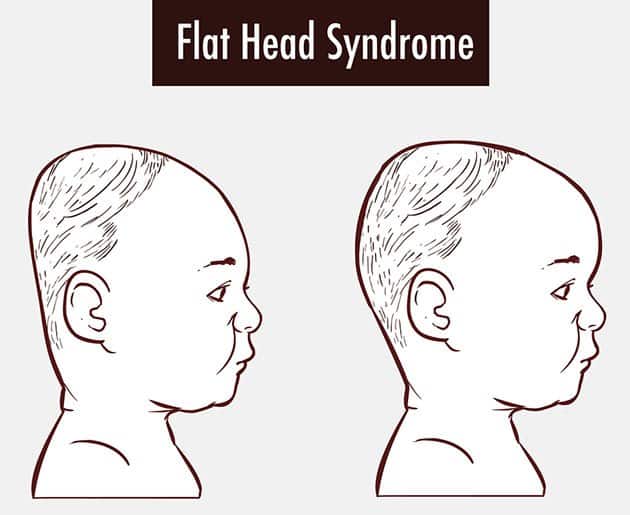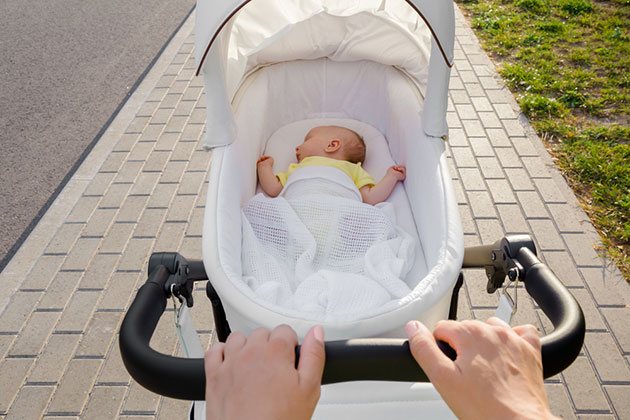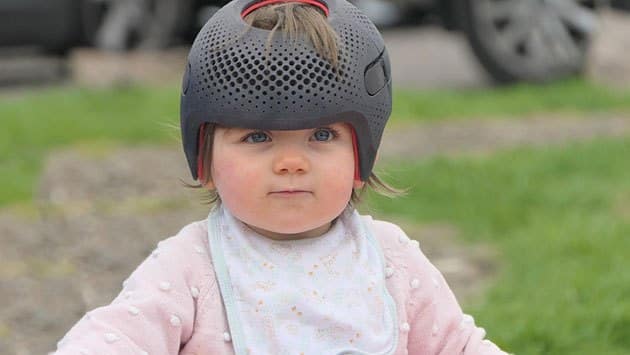Newborns have flexible and thin bony plates instead of hard skulls, as they need to develop and become stronger. But, babies may develop a soft spot on the head, known as a flat head syndrome, from lying on a baby swing, mattress, or car seat.
The question is: Should you let your baby lie in a car seat for too long?
We discuss car seats and flat head syndrome, preventing this condition once you notice the symptoms & safe use of car seats.
More...
Car Seats and Flat Head Syndrome: Are Child Restraints Harmful?
If you wonder whether your little one might have flat head syndrome due to car seat overuse, here's what you need to know.
1. Defining the flat head syndrome

The baby flat head syndrome, also called positional plagiocephaly, is a flat head deformity in infants and babies. It's a state where a baby's head is flat on one side or in the back. The deformity might be present during the birth or the first few months of an infant's life.
2. Identifying the baby flat head syndrome
Search for the following signs to recognize the deformation:
It might take several months to notice the symptoms of the flat head syndrome. Look for the signs of deformation during bath time when your baby's head shape is the most visible and their hair is wet.
3. What causes the flat head syndrome?
Below you can find multiple causes for the head deformation:

4. Can baby car seats and carrycots cause plagiocephaly?
Many manufacturers have created multiple child restraints to make parents' life more sophisticated. They have developed bucket babies, buggies, seats, Moses baskets, and similar devices to properly place and restrain the children. However, these are not always the best solution for kids.
Experts have determined that car seats and carrycots can cause both severity and incidence of flat head syndrome. Parents put their kids inside the seats, buckets, and similar child restraint systems to lie flat and prevent SIDS. However, baby carriers can also cause a flat spot on the head. The condition might also worsen the overall neural and muscle development.
So, how to prevent flat head syndrome in child restraints?
Do not place your child in the car seat or similar child restraint for long periods. Overusing child restraints will cause plagiocephaly, tight neck muscles, shoulder muscles weakness, and similar deformities in development.
If your children lie flat in the seat for an extended period, the restraint will also cause spine, hip, or neck muscle tightness, making the baby's progress and development weaker and slower. As a result, the spine will be more vulnerable and fragile than it should be for the corresponding child's age. The overuse of restraints also increases the risk of torticollis, so avoid having your baby spend too much time in restraints.
5. Should parents use child restraints at all?
Yes, parents must use car seats and similar systems to protect the baby while on the road.
However, you must restrict and limit the use of baby items to a minimum and use them only when it's necessary. This includes only transport and use of the car seats in your motor vehicles.
Car seats at home: Yes or no?
Many parents use restraints at home, as multiple sleeping devices, or when running errands. This is wrong, as you must remove the pressure from your baby's neck muscles, spine, and head for at least 50% when your little one is awake.
It would be better to hold a baby in your arms rather than using a carrier through tummy time and active baby time. You could also use a backpack carrier since such items won't put extra pressure on the back of the head and the skull.
In addition, your baby will not spend their time lying flat, causing a flat spot in one position. Although it might be hard to adapt to new techniques, you should practice, positively encourage and reward your baby to leave the restraints and prevent a flattened head.
Can prams or strollers cause a flat spot on the head?

Prams and strollers can also cause a flat spot on the baby's head, similarly to other restraint devices. Choosing a suitable pram or a stroller is crucial to follow the kid's development as your babies grow.
The main factor to consider when choosing a pram is to check whether it allows your baby to lie flat. Although the stance might contradict the previous advice, the pram with a fully flat position will reduce the risk of plagiocephaly. Read below.
While in the fully flat position, the baby sleeps stretched, with enough room to twist, turn and find the best body position for the spine, head, and neck. The baby won't add more pressure to the skull and the back of the head, so they won't remain only on one side and cause the syndrome.
On the other hand, while in the semi-recline positions, the baby puts pressure on the spine, back, and neck, adding more compulsion to the restricted movements.
Additionally, when the cheeks or ears are pushed forward on one side, there will also be a flat spot on the skull, as there's no movement. Such conditions only aggravate torticollis. You can find some of the best strollers or prams here.
Common treatment of plagiocephaly
Your doctor might recommend physiotherapy to help your baby and cure the plagiocephaly. The therapy helps if your little one has issues with neck muscles, making them stronger to keep their heads upright and turn around better.
But, you have other possibilities to help your baby. For instance, you can try to make your kids turn the round sides of their heads towards the mattress. Try moving the crib to the new place or changing the direction the kids sleep in the crib.
Consult your doctor & check how the baby should place their head and what position to take to avoid the risk of SIDS. Please do not use the sleep positioners; always place kids on their backs, even with flattened heads.
What to do if there’s no improvement?

Please refer to your doctor if your kids' condition doesn't improve even after six months. In severe cases, your doctor will propose wearing a custom helmet.
The helmet will visibly, permanently, and gently correct the shape of your baby's skull. Your baby must wear the helmet 22-23 hours a day for three to five months or more.
The AAP states that with slower recovery, kids might need a second helmet as well. Kids will need surgery only in rare cases with congenital plagiocephaly with closed sutures, and compulsion in the skull needs to be released.
Again, consult your doctor to check the improvement.
FAQs
Can car seats cause flat heads?
Yes, car seats can cause flat heads when overused. You must restrict the use only for transport, not at home or free time to avoid plagiocephaly.
When can you stop worrying about a flat head?
You can stop worrying about a flat head entirely after two years of age if parents and caregivers regularly work on babies' positions when they're awake.
Will the baby's flat head fix itself?
Yes, the baby's flat head will fix itself if you stick to the treatment and change the baby's head position while awake.
When is it too late to correct a flat head?
After 14 months, it is too late to correct a flat head. The bones will fully develop, and the skull will strengthen so that the treatment won't be effective.
Do baby pillows work for a flat head?
No, baby pillows don't work for a flat head and are not recommendable. They aren't necessary for sleeping, as they might increase the threat of SIDS and fatal sleep accidents.
Final Thoughts
As you can see, plagiocephaly isn't life-threatening but causes deformities in kids. So, follow your doctor's advice and stick to the treatment to cure the deformity as soon as possible.
And, don't place babies in car seats for too long, as you can only aggravate the condition.
